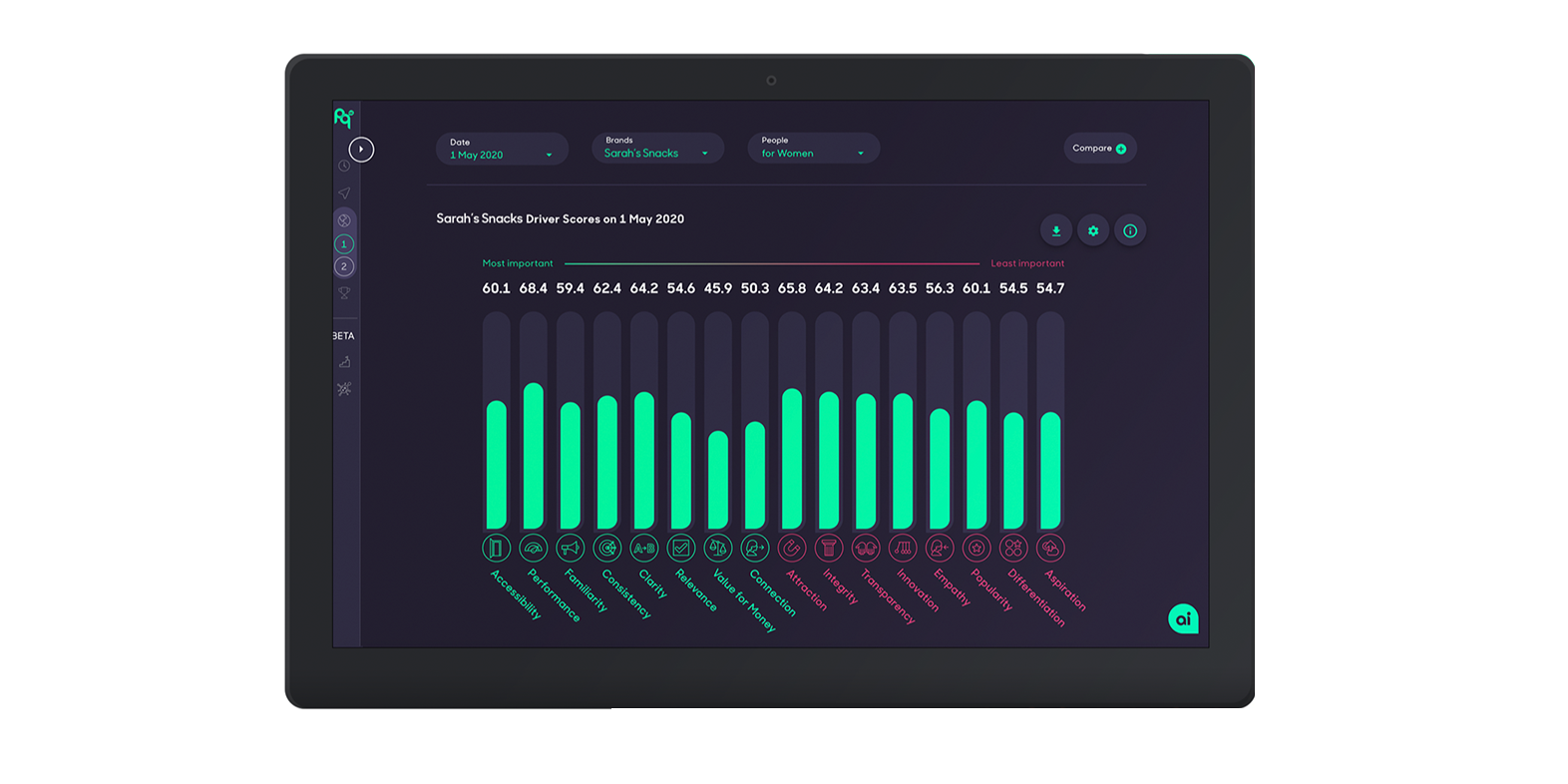Posted on May 21, 2021
Updated on March 13, 2023
4 min read time

In a world dominated by competitive convergence, relatability has never been so important. Brands looking to compete, need to keep a finger on the pulse of changing trends to ensure their products and services resonate with their consumers wants and needs.
At ProQuo, we understand what brands need to do to connect with customers. Connection is one of our 16 Drivers of Relationships, the 16 factors that are proven to determine a brand’s relationship with its consumers. Connection is rooted in relatability. Humans are social beings and are drawn to people that like the things we like, fulfil our social needs in the way we desire, and share similar belief systems to our own. We build relationships based on a mutual understanding of each other and this is no different for brands. That’s why having a good grasp of Connection is important for any brand if they want to succeed in today’s competitive landscape.
How to grow your brand's Connection
Brands looking to boost their Connection with consumers, should focus on maximizing relatability. A great way to express relatability is through Communication style, which is one of the 14 Marketing Levers at a Brand Manager’s disposal, that when pulled help to get brands closer to their growth goals.
Explore Communication to discover key actions to take to improve your relationships with your consumers. Consider:
Isolate your brand’s message into one single idea. If you want people to remember one key thing about you, what would it be? It needs to be clear, succinct and punchy, so it’s easily memorable. Is your message about the product, the outcome of the brand, or about subverting established beliefs? Whatever, you’re trying to. communicate, take the time to distil it into one single message, as this clarity will be invaluable to your creative team, and will help guide each step of the creative process.
When constructing your message, explore our Creative Brief Template to guide the direction of your creative ideas. This can be used as a blueprint for internal and external agencies to refine and sculpt your messaging, ensuring your key message feels unique and different to your competition and resonates with your target audience’s wants and needs.
The way you express your Product Benefit is as important as your key message. Think about what your target audience wants from your product. What is going on in their daily lives, culturally around them, or in their phase of life? What is it that they feel they need from your product or service?
Product Benefits break down into Functional Benefits (what practical needs does the product satisfy?) and Emotional Benefits (what emotional needs does the product fulfil?). When looking at the brand Coke, for example, a key Functional Benefit is that it quenches thirst. The Emotional Benefit is how the product makes its consumers feel, which is relaxed, and happy.
Your Emotional Benefit should reflect how your audience is feeling. It needs to feel intuitively empathetic and perceptive, whilst offering a clear resolution. The Functional Benefit should encapsulate the gain the consumer is receiving from using the product.
A relatable Tone of Voice is key in any communication strategy. You must look and sound authentic and real to resonate with as many people as possible. Think about the language you use. Is it too formal, dated, or ‘out of the loop’? With the fast-changing online context, it’s easy to fall behind. Make sure you are staying plugged into other brands online who are engaging with your audience well and apply these learnings to your brand. Think about how your personality is coming across, is it incorporated into the way you speak? It’s also important to consider your channel strategy here. Make sure your tone comes across consistently in every platform. There may be places where you need to adjust tone slightly, but your essence should always remain the same.
Resonating with your category and culture is key when trying to boost your relatability. When something happens, you need to be ready for it. Subscribe to news channels that comment on your industry to keep up to date with the latest trends, events and happenings, to ensure your brand always has a finger on the pulse. Doing so, will help you to adjust your communication strategy accordingly when big cultural events occur.
The channels you choose to represent your brand on will define the strength of your connection with your audience. Different audiences prefer different channels, so be selective about where you feature. Focus on the types of channels your audience is engaging with and make sure to review this process frequently, as consumers attitudes towards channels can change quickly.
Understanding the purpose of each channel is important. TV is great for awareness, and podcasts for building trust, whereas social media can flex between many different objectives. Whichever channels you choose, it's important to keep your brand’s personality consistent across these to ensure consistency.
Brands doing it well
The Oatly brand are masters at communication, creating a relatable tone of voice that’s self-aware, speaks directly to its audience, and isn’t afraid to push the status quo. Humor is their key vice, and they pull it off well. Their communication strategy is executed consistently across all touchpoints. When you read something from Oatly, you are instantly aware of who is speaking, whether the copy is on the back of a carton, in a global ad campaign or through a social post.
Dove is another great example of a relatable brand. Their communication strategy is inclusive and kind, featuring a key message of ‘real beauty’. This message has grown Dove’s following and boosted brand perception, as it heroes real women. And the message is supported throughout their brand activities, where they seek to be as representative as possible, with ad campaigns that champion diversity.
How to judge the success of your strategies
Relatable brands tend to get a greater level of attention on social media channels. So, to know if your strategies are working, analyze your social platforms to see if you’re receiving increased followers and engagement.
Or for a more in-depth analysis, you can also use the ProQuo platform to gauge the success of your strategies. Consider:
Analyzing the Conversations feature to gauge how people are talking about your brand

Keep a beady eye on your Connection score in the platform. If your strategy is successful, you should expect to see it rise. The Conversations feature within the ProQuo platform can help you to gauge what people are saying about you. See how people are talking about your brand. Do they relate to your key messages, product benefits and tone of voice?
You can also import your social metrics into the ProQuo platform to see how these align with your Driver Scores, for a closer understanding of your progress.
If you’re looking to find out more about Connection and want to know how to build a brand people love, check out our definitive guide.
Our intelligent platform will take your brand further, faster.
Don’t believe us?
© 2020-2023 ProQuo AI International
All rights reservedWebsite by Blend